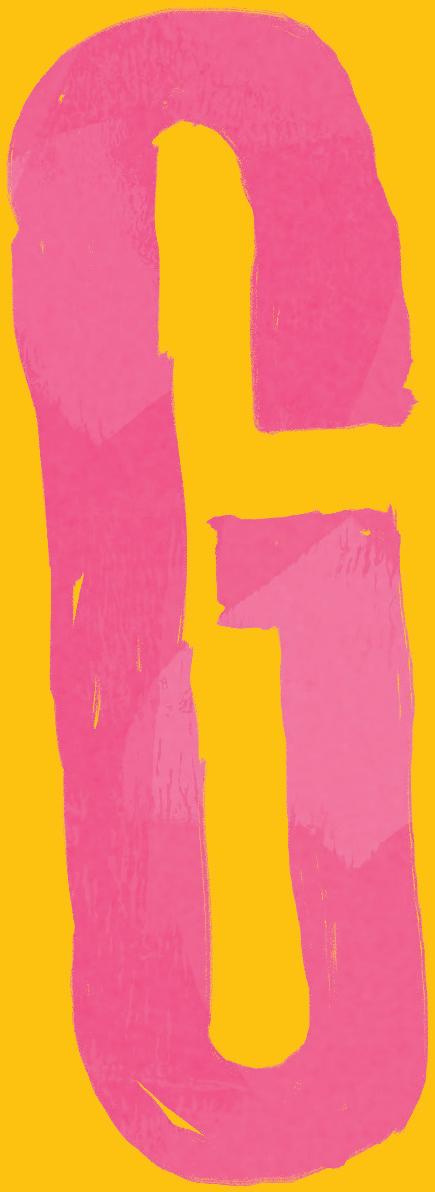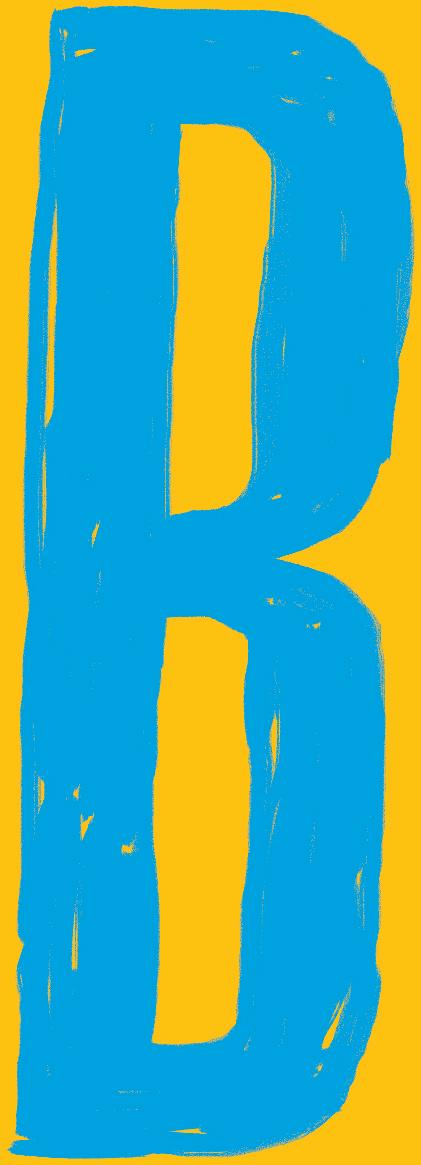JAMIE RAINES





‘Jamie’sopennessand understandingistruly inspiring’ Gottmik














‘Jamie’sopennessand understandingistruly inspiring’ Gottmik









Vermilion, an imprint of Ebury Publishing 20 Vauxhall Bridge Road
London SW1V 2SA
Vermilion is part of the Penguin Random House group of companies whose addresses can be found at global.penguinrandomhouse.com
Copyright © Jamie Raines 2024
Illustrations by Alex Bertie and Nate Sanger-Davies
Jamie Raines has asserted his right to be identified as the author of this Work in accordance with the Copyright, Designs and Patents Act 1988
First published by Vermilion in 2023
This edition published by Vermilion in 2024
www.penguin.co.uk
A CIP catalogue record for this book is available from the British Library
ISBN 9781785045523
Printed and bound in Great Britain by Clays Ltd, Elcograf S.p.A.
The authorised representative in the EEA is Penguin Random House Ireland, Morrison Chambers, 32 Nassau Street, Dublin D02 YH68
Penguin Random House is committed to a sustainable future for our business, our readers and our planet. This book is made from Forest Stewardship Council® certified paper.
I would like to dedicate this book to the trans community. This book is primarily for you, and made possible by you.
I’d also like to dedicate this book to my wife, Shaaba, and to my parents, who have supported me every step of the way.
Thank you.
Hey, my name’s Jamie, and I’m trans. Thanks for picking up my guide on all things transgender. I called this guide The T in LGBT because – spoiler – that is actually how I came out to someone very close to me.
Just like the title reflects, this book is a combination of my personal stories and experiences mixed with practical and factual advice about what being trans is, the steps that might be involved to live as your true self and how to navigate as a trans person within society.
This guide also includes the voices of many others, mostly other trans people of varying identities, but allies too.
There’s no one way of being trans, and no right or wrong way to transition.
That’s why this guide showcases many different voices and paths of transitioning.
But in terms of my contributions, why should you listen to me?


















Well, firstly, I’m trans – surprise! Ha-ha. I talk about it a lot in videos that I put online as a full-time content creator. My channel, Jammidodger, is all about transitioning, being trans, breaking down transphobia and homophobia and a few other topics that I think people might find interesting (and that I do, too). My main aim is to educate through entertainment (you’re learning, but you don’t know it!), but also to give people a safe space, provide helpful info about being trans and hopefully to help other trans people feel a little less alone.
I first started making videos when I was 17 in 2011, nearly a year after I figured out I was trans myself, and just before I started taking hormones. (How has it been over a decade already?!) My main aim was to document my personal transition and the physical changes that testosterone would cause. I took a photo of my face every day for a good four years because I really wanted to be able to look back and notice any changes in my facial structure and watch my facial hair coming in (which required a lot of patience, as it turned out!).
I also had a secondary idea of maybe, possibly, helping at least one other trans person going through their journey in the UK. YouTube had been a lifeline of hope for me when I was figuring out my ‘transness’ (that’s definitely not a word, but hey-ho). There were only three trans people I could find online sharing their stories, and they were all from the United States. Yes, I felt less alone watching them, but the process of transitioning and accessing healthcare and resources can be very different depending
on where you are in the world, and I was still none the wiser about what I actually needed to do!
I knew that once I did figure it out I wanted to share my findings to help others, and that’s how my channel was born. (You can thank my wife, Shaaba, for that name. She used to call me ‘Dodger’ because ‘Jamie’ sounds like ‘Jammie’.) I remember my first video reaching 98 views, and I was so nervous about how many people that was. My heart would race at each new comment that came in and I nearly took it down! I’m very glad I didn’t, though. Being a creator and raising awareness about trans issues online has become my full-time job, and I recently hit a milestone of reaching 1 million subscribers on the Jammidodger channel – younger Jamie would never have believed it!
When I first started the channel, almost all of the videos I made were about my personal experiences of transitioning. The changes I noticed on testosterone, how to bind safely, dealing with dysphoria, things like that. I thought this would be particularly useful when I went through big and personal trans journey ‘milestones’, but I see my transition as being complete now. Apart from the hair that is slowly taking over my entire body (!), there’s not that much to personally talk about anymore.
In December 2019 I made a video that was about my transition, from start to finish, to kind of round off that chapter of my life. It felt like a very special video to make, and I think it will always be one of my favourites. I now use my platform to talk about the trans experience more generally, often looking at stories and memes from other people.


















I also try to share other aspects of my life that aren’t just to do with being trans, because I’m so much more than that one part of my identity. I’m a doctoral researcher; I’m a husband to my best friend, Shaaba; I’m a cat-dad to two balls of fluff called Apollo and Prawn; I’m a dinosaur geek and I would buy ALL the Lego sets if I had the space for them (but don’t tell Shaaba, she’d never allow it!); I’m a fashion enthusiast; I’m a Coca-Cola fiend; I’m a huge bookworm; and I’m a writer. I’ve created short stories and poems for as long as I can remember being able to write. Younger me would be amazed and ridiculously excited that I’ve actually written a whole book! Oh my gosh.
Did you catch my sneaky mention of being a doctoral researcher above? I’m not trying to brag: my PhD in psychology was focused on the development and wellbeing of transgender people, so I’ve done a lot of research to make this guide helpful. Technically that makes me a doctor, but I can’t help with diagnosing a rash – though I can tell you if something is statistically significant!
I hope my experience as a trans person, a trans creator, a doctoral researcher and an LGBT+ advocate assures you that I know my shit.
Maybe you’re very sure how to answer that question, or maybe you’re still trying to figure it out. Whether you’re questioning, starting to figure things out or have already begun your transition, this guide is for you.
This book is also for you if you’re an ally, or have a trans loved one who’s made you want to learn more. Even if you’re unaccepting or not comfortable about trans people, I hope this guide proves to be of some value to you.
Everyone is welcome.
That’s how it should always be.
Maybe as a doorstop, or as something to pop your phone stand on to get that perfect selfie height? I hope you’ll actually read this too, ha-ha, and I want to give you some guidance on how best to do that, plus a little key to some special elements you’ll find.
• There’s no particular order you should read this book in. You can skip about between the topics that you need advice or info on, or you can read it cover to cover with each chapter in order. It’s totally up to you.
• As you might imagine, there will be frank discussion around gender dysphoria, surgeries, genitals, transphobia, so only dive into topics you feel up for. There might be some sections you find tricky to read through depending on your state of mind. I for one would not be able to read about dysphoria if I was feeling particularly dysphoric. I’ve provided a quick overview at the beginning of each chapter of what’s going to be covered, and some of them have trigger warnings. Look out for these if you feel you need to.
• z Top Tip: Fellow fantastic trans people, keep an eye out for these sections throughout this book that
might provide little hacks to make your journey of selflove and understanding easier.
• Q For the Allies: Awesome allies, keep an eye out for these sections throughout this book for little tips on how to best support a trans loved one. You may note that some of these are signed ‘ – Shaaba’, and that’s because my gorgeous wife wrote these sections! She’s been the best ally for me and has some great best practices to share.
• While it’s true that no single trans journey is the same, a lot of trans advice applies to everyone in the community – trans men, trans women and non-binary people alike. A good 80 per cent of this book applies to everyone, but for specific topics, like aspects of socially transitioning (such as packing or tucking), or surgeries (such as double mastectomy or breast augmentation), I’ve highlighted subheadings like this:


• You’ll also see text boxes. These will feature invaluable insight from other contributors – either longer extracts from one person in particular, or shorter quotes from several people in response to a question (a random sample of trans people from around the world answered these – a huge thank-you to everybody who took part!). It should be clear when the information provided is from a contributor instead of me. z Top Tip: You might find it useful to answer these
questions yourself as little exercises to help you understand your identity and journey better (look at me being all helpful already).
• Finally, you might see footnotes at the bottom of some pages, which will look a bit like this: ‘Title of Paper’ (Year), Authors, Publication. These are academic sources, and you can search for them online to find the full papers. As a doctoral graduate, it felt important to highlight some of the research to support facts that are frequently disputed by transphobes, or miscommunicated in ways that damage the trans community. We don’t need science to know who we are, but I wanted to equip you with some credible sources to share with others if you ever feel you need to.
When you’re feeling ready, let’s go!
AFAB Shorthand for ‘assigned female at birth’ and typically used when discussing trans masculine people (trans men and AFAB non-binary people).
AMAB Shorthand for ‘assigned male at birth’ and typically used when discussing trans feminine people (trans women and AMAB non-binary people).
Assigned sex at birth Refers to the sex a person was assigned at birth – that’s a terrible definition, isn’t it? It’s basically the sex label you were given when you were born based on the appearance of your genitals. People born with a penis are AMAB and people born with a vagina are AFAB.
Baby trans The unofficial term for people who have just figured out they’re trans/are in the very early stages of their transition.
Birthname/deadname Refers to the name trans people had before they transitioned. Birthnames can be a difficult topic for trans people and cause a lot of dysphoria.
Bottom surgery No, it’s not a surgery of the butt. It’s the colloquial term used to refer to genital surgery that trans people may undergo, including phalloplasty,
metoidioplasty and vaginoplasty. We’ll look at all of these in more detail later on.
Cisgender/cis The opposite to transgender, cisgender (or cis for short) means ‘on the same side of’ and is used to refer to people whose gender is the same as their assigned sex, which applies to most of society (99.5 per cent of society based on the 2021 UK census). The ‘cis’ prefix is used in more context than just gender. Cisalpine. Cisplatin. Cisgender. Some people don’t like the term ‘cis’ or ‘cisgender’ because they feel it’s a new label being placed on them. In reality, it’s just an adjective, a describing word, and an easier way of saying ‘not transgender’. It also avoids othering trans people when it’s contextually relevant to distinguish between transgender and cisgender people. So instead of saying ‘trans men and men’, we’d say ‘trans men and cis men’, as both fall under the umbrella of ‘men’.
Gender conformity/nonconformity Terms used to describe how much a person presents and behaves in a way typically expected for the gender they’re living as. For example, a cis man who presents femininely would be seen as gender-nonconforming, and a cis man who presents masculinely would be seen as genderconforming. Trans people will commonly have been gender-nonconforming before they came out as trans, but it’s not a requirement, and many trans people are gender-nonconforming to their true gender after they transition. Gender conformity/nonconformity is related to gender expression and doesn’t impact gender identity.
Gender dysphoria A discomfort people can feel when there is a mismatch between their gender identity and assigned birth sex. It can manifest in different ways for different people and be worse over some things compared to others. For example, one trans man may have a lot of dysphoria over his chest, and another may have minimal chest dysphoria but a lot of dysphoria over his voice. Although it’s described as a discomfort, it’s more than feeling very full after a Christmas dinner! It’s intense and relentless, and I can best describe it as a desperation to not be in my own skin. Certain situations can be a trigger of gender dysphoria being felt more intensely, and this can be vastly different from person to person. We’ll go through some of the more common triggers through this book.
Gender euphoria The opposite of gender dysphoria. This is a positive feeling, including comfort, when thinking about your true gender.
Gender expression How anybody presents themselves to others (and themselves!) in terms of masculinity, femininity and androgyny. Gender expression is separate to gender identity – in fact they’re very different. Gender expression isn’t about who you are but how you express. It’s largely based on stereotypes of what girls and boys typically like, so people who wear make-up and heels would be seen to express femininely, and people sporting short hair would be seen as expressing masculinely. People don’t need to express in ways that would typically be expected for their gender identity.
Gender identity The feeling of our inner sense of self, and the gender we know we are. If assigned birth sex is the genitals, and gender expression refers to what you put on your body, I guess gender identity could be seen as referring to the gender you know you are in your head. This can be different to assigned birth sex, and this difference is what makes trans people, well, trans!
Gender Recognition Act 2004 An Act of Parliament in the UK that allows trans people to legally change their sex on their birth certificate by applying for a Gender Recognition Certificate (GRC).
Hormone Replacement Therapy (HRT) The formal name for the process of trans people taking either testosterone (for trans masculine people) or oestrogen (for trans feminine people). Not every trans person will take hormones, but many will. More on this later!
Intersex Refers to people who are born with sex characteristics, including genitals and/or chromosomes, that do not fit the typical pattern of binary sexes.
LGBT+ The acronym used to refer to people who are not cisgender and straight. They can be cisgender and not straight, or transgender and straight, but not cisgender and straight. Specifically, LGBT+ stands for lesbian, gay, bisexual and transgender (and the + is for other identities including queer, intersex, pansexual, Two-Spirit and asexual).
Non-binary Not relating to or involving just two things. In the context of gender, it’s used to refer to people who
do not have a gender that falls within the binary of either being a man or a woman. Some non-binary people describe their identity as falling somewhere in between ‘man’ and ‘woman’, while others describe their identity as falling completely outside of the two terms. Non-binary people are typically seen as falling under the umbrella of ‘transgender’ as their gender is different to their assigned sex, but not all non-binary people identify with the term ‘transgender’.
Outing When a trans person’s transness is shared without their consent/behind their back. This can create uncomfortable situations for trans people, and even put them in danger depending on who they are outed to. Outing can happen to any LGBT+ person whose identity is shared without their consent.
Pronouns In the context of gender, Pronouns are the words you’d use to refer to someone: for example, ‘he/ him/his’, ‘she/her/hers’, ‘they/them/their’. There are others too, though these are the most common. There are also non-gendered pronouns, such as ‘I’ and ‘you’. Pronouns seem to be a pretty contentious subject that transphobes have a real issue with, and some institutions have gone so far as to say they’re banning pronouns – not sure how that would work! But at the end of the day, everyone uses pronouns, and it’s super easy to respect someone’s pronouns. Using the wrong pronouns for someone deliberately is often referred to as misgendering (bonus little definition for you).
Sexual orientation Someone’s identity in terms of which gender (or genders) they’re attracted to. There are different labels used to describe sexual orientations, including:
• Heterosexual, or straight – attraction to those of the opposite gender
• Homosexual, or gay/lesbian – attraction to those of the same gender
• Bisexual, or bi – attraction to two or more genders
• Pansexual, or pan – attraction to people based on factors other than gender
• Asexual, or ace – little to no sexual attraction or desire to have sex (but this doesn’t mean they never have sex)
• Aromantic, or aro – little to no desire to form romantic relationships while maintaining a desire for sex. People can be both asexual and aromantic.
Stealth When a person is living as their true gender but doesn’t disclose that they’re trans to people in their lives, such as friends and colleagues, they’re known as being ‘stealth’.
TERF/gender-critical Trans-exclusionary radical feminist (TERF) was a term originally used to separate radical feminists who are not anti-trans from those who are. The term has since become less favourable as it’s clear that TERFs aren’t actually feminists, but try to hide their transphobia under the guise of feminism. They don’t stand up for the rights and equality of all women, and many only speak up when it’s about excluding trans women further rather than on actual issues of women’s equality, even those that relate to cis women. That’s why terms such as ‘gendercritical transphobes’ and simply ‘transphobes’ are being
used more, as it doesn’t include the word ‘feminist’ under false pretence.
Top surgery Surgeries performed on the chest. It’s most commonly used to refer to a bilateral mastectomy undergone by some trans masculine people (and there are two types of procedures for this which we’ll get into later on) and breast augmentation undergone by trans feminine people. Not all trans people feel a need to have top surgery though, and these medical procedures can also be undertaken by cis people.
Transitioning The process that transgender people go through to live, and to better reflect the characteristics typically associated with their gender, as opposed to their assigned birth sex. This can involve social (or nonmedical) transitioning steps, and medical steps.
Trans femme/trans masc Terms that cover trans people who fall outside the binary of man or woman, as well as binary trans men and women. Trans masc is a broad term to refer to trans AFAB people (trans men and non-binary trans masc people), and trans femme is a broad term to refer to trans AMAB people (trans women and non-binary trans femme people).
Transgender/trans An adjective used to refer to people whose gender identity is different to their assigned birth sex (which accounts for about 0.5 per cent of the population according to the 2021 UK census). ‘Trans’ is a prefix that means ‘on the other side of’, and just like ‘cis’, it’s used in more contexts that just gender. Translucent. Transportation. Transgender.
Transness This isn’t a real word, but I find that it fits so many contexts and I end up using it quite a lot! When I say ‘transness’, I’m referring to the state of being a trans person – which is much more of a mouthful, so I’m sure we can all agree that ‘transness’ is both easy and cute.
Transphobia An aversion to, dislike or prejudice against transgender people that’s solely based on them being trans.
Triggers A wide range of things (actions, contexts, words, smells, etc.) that can evoke strong feelings or memories. Trans people often experience triggers of gender dysphoria. For example, using certain terms to describe the anatomy of a trans person, or misgendering them.
There might be some words that you’ve seen or heard of that aren’t great to use. Most of these are considered bad because they’re grammatically incorrect, outdated or have been adopted by people who don’t respect the communities they were originally created for, and so can now cause harm. Here are a few relating to the trans community that are generally best avoided:

When you were a girl/When you were a boy
‘Choosing to’ or ‘deciding to’ transition THE surgery